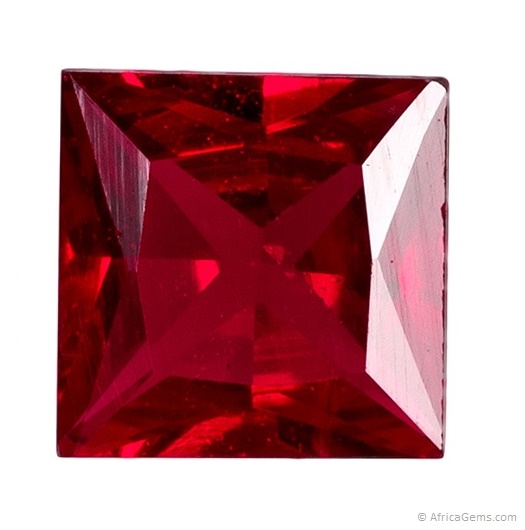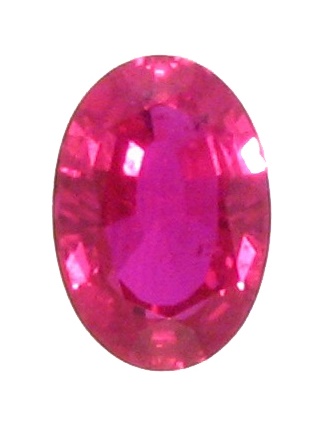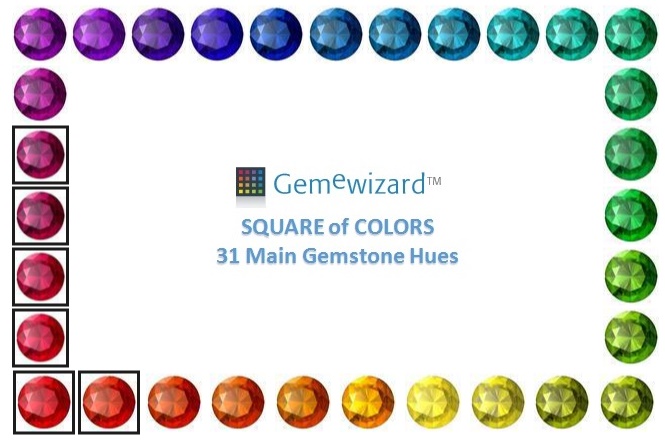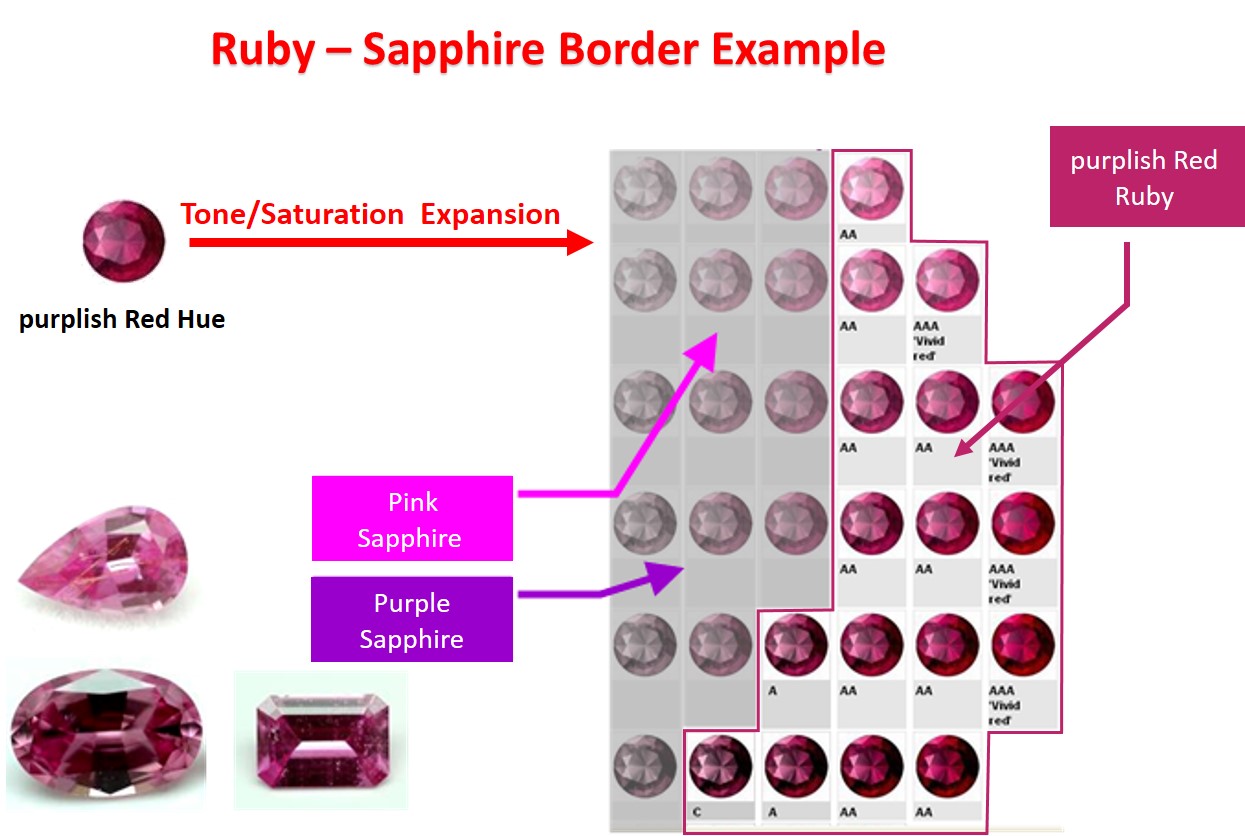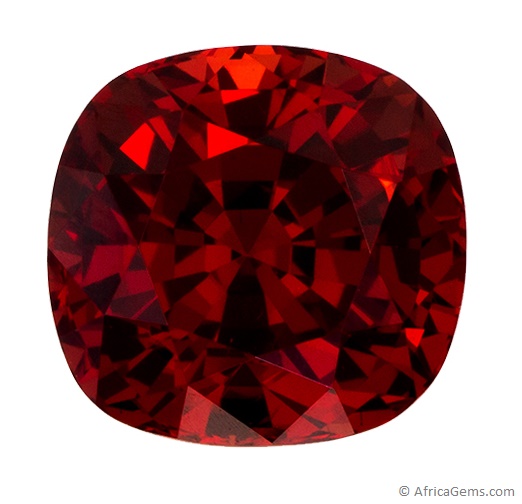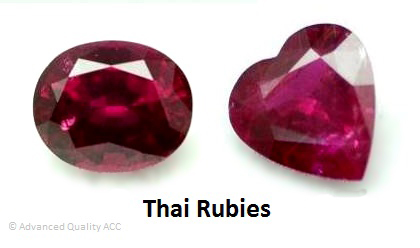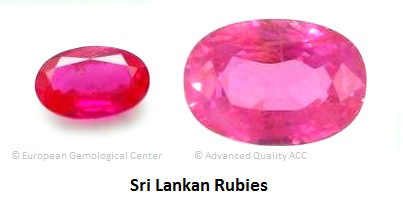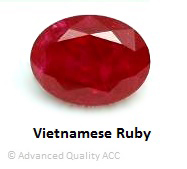RUBY
Ruby and sapphire are members of the corundum family, a group of crystallized aluminum oxides (Al2O3:Cr). Both have exactly the same chemical composition and only small amounts of colouring trace elements distinguish between them. Rubies are considered more valuable than sapphires.
Ruby is corundum occurring in various shades of red; whereas sapphire appears in all possible colors except red, such as blue, yellow, green, purple, pink and brown. In some cases, however, a gem can fall into the border between the two variety definitions, for example, in very light coloured corundum, or when the red colour is not dominant. In these cases, the gem will be identified as a sapphire (pink sapphire, orange sapphire, purple sapphire… etc.).
.JPG)
b.jpg)
LEGEND AND LORE
Ruby is the birthstone for the month of July and the gemstone representing the fifteenth and fortieth wedding anniversaries.
It is known as the stone of love and is capable of reconciling lovers' quarrels. Ruby is given as a symbol of success, devotion, integrity, health, and passion. The gem was once thought to ward off misfortune and ill-health and to endow health, happiness and wisdom onto its wearer. It was also considered a remedy for various ailments, and was an important component of the medicine chest in the Middle Ages.
Peoples of the East would insert a ruby into a cut in the skin above an artery, believing that the gemstone would infuse great courage and wisdom into their blood. On account of its rarity, rulers used it as a symbol of their wealth and power. Ruby is mentioned in the Bible as one of the gemstones on the High Priest's breastplate.

a.JPG)
RUBY COLORS
Ruby occurs in various shades of red, from purplish Red (29) to Red (1) to orangey Red (3), including brownish and dark red. Its color comes from traces of Chromium in the crystal structure. Some ruby sources have typical shades, which is why rubies are sometimes referred to together with their origin, e.g. Thai Ruby. Especially valuable are rubies from Mynamar, known for the most covetted color of rubies, Pigeon Blood.
The color borders between rubies and pink sapphires are not clear cut and they differ between the markets around the world. For example, a light-red-coloured corundum gem may be considered as a pink sapphire in the Far East, or as a light-coloured ruby in Europe, where the term pink sapphire is rarely used.
RUBY SOURCES
Rubies are mainly found in southern Asia and central to southern Africa.
Asian Sources
Myanmar
Myanmar is considered to be the world's most precious source for rubies. The two main sources are Mogok and Mong-Hsu. The preferred colour of the Myanmar ruby is termed Pigeon Blood, a deep red with a slightly purplish hue. It can be compared to the colour of glowing coal, or to that of a red traffic light.
Thailand
The main sources of Thai rubies are Kanchanaburi and Chantaburi. Thai rubies commonly possess a darker tone than the Myanmar gems, commonly exhibiting a brownish or purplish tint, which sometimes dominates almost the entire colour of the gem.
Sri Lanka
Corundum is found in many areas of Sri Lanka and in an astounding variety of colors. Most of the Sri-Lankan rubies possess a deeply saturated strongly pinkish Red hue with a tone that tends to be light, weaker than the colours of the Myanmar variety.
Vietnam
There are two main sources of corundum from Vietnam, Luc Yen and Quy Chau. From time to time, rubies displaying the somewhat pinkish-red appearance of Myanmar rubies have been discovered in these deposits.
Other ruby deposits in Asia are located in Tajikistan, Afghanistan, Northern Pakistan in the Hunza Valley, Laos, Nepal, Cambodia and India, where deposits with relatively large crystals were discovered in the federal states of Mysore and Orissa
African Sources
Mozambique
The Montepuez mine of Mozambique is the rising star among the recently discovered ruby mines around the world. It was opened in 2009 and has become the dominant alternative source for pigeon blood colours. In the past, Mozambique was known only for low-grade rubies and the Lichinga area was its most important source.
Madagascar
Another important African source is Madagascar, where two of its main deposits are Vatomandry and Andilamena in Eastern Madagascar.
Tanzania
At least a dozen locations scattered all over Tanzania are known, the most significant ones being the Longido mine in northern Tanzania producing large opaque, dark brownish red rubies, surrounded by green zoisite; the Umba River, the Morogoro area and Winza, known for its fine pinkish red, Burmese-type hue, albeit its small yield.
Other African sources include Kenya, Malawi and Nigeria.
Additional sources around the world include Australia and USA, in North Carolina and Montana.
PHYSICAL PROPERTIES
Variety:RubySpecies/Series:Corundum
Chemical Composition:Aluminum oxide, with chromium (Al2O3:Cr)
Crystal System:Trigonal
Color:Red in various shades, from purplish Red to orangy Red, including brownish and dark red
Hardness:9Refractive Index:1.762 to 1.77 (+0.009/-0.005)
Specific Gravity:4.00 (+0.10/-0.05)
Properties
RI 1.762-1.77 HARDNESS 9 SPECIFIC GRAVITY 4.0 SPECIES-CORUNDUM OPTIC CHARACTER-DR PHENOMENA-CHATOYANCY(VERY RARE
Reactions
Ultrasonic: usually safe Steamer: usually safe Heat: good;may improve color Chemicals: boron
Major Sources
Thailand, Myanmar, Cambodoa, Sri Lanka, Kenya
Grading Information
GEM, AAA, AA, A+, A, B
Specific Gravity
3.99





